|
INSECTS ON WILLOWS: CATKIN FEEDERS |
||
|
Willow catkins are attacked by many different insects including flies, sawflies, moths, and beetles, and usually the larva has to be checked in order to be sure of the identity of the species. |
||
|
Egle sp. (Diptera: Anthomyiidae) Egle sp. larvae feed on seeds in willow catkins and expel the wolly fluff surrounding the seeds in the flask-like ovaries. The small yellow larvae can be found in the wadding or inside the ovaries. They have no visible heads nor legs, and there is no frass around the larvae. |
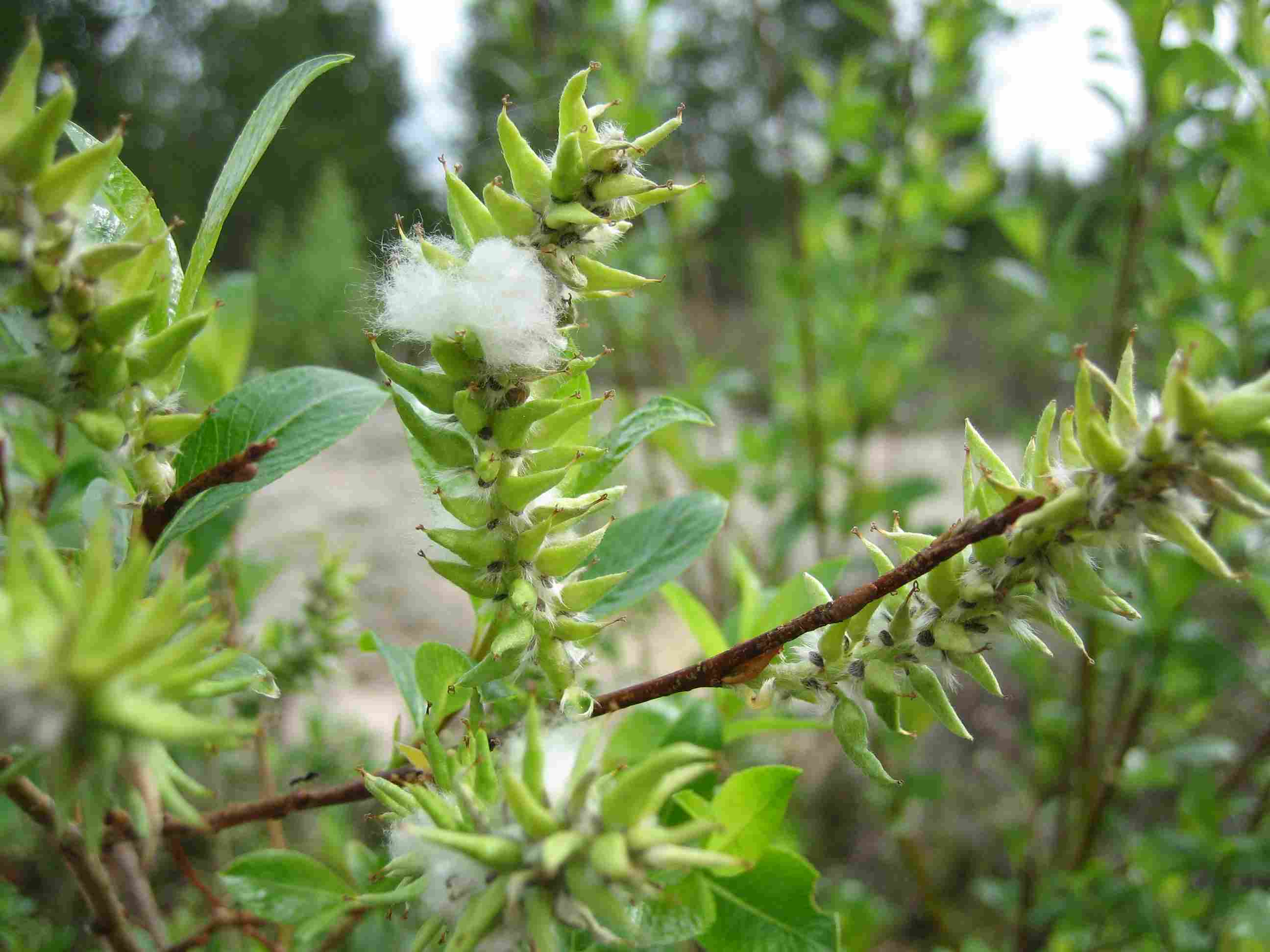 |
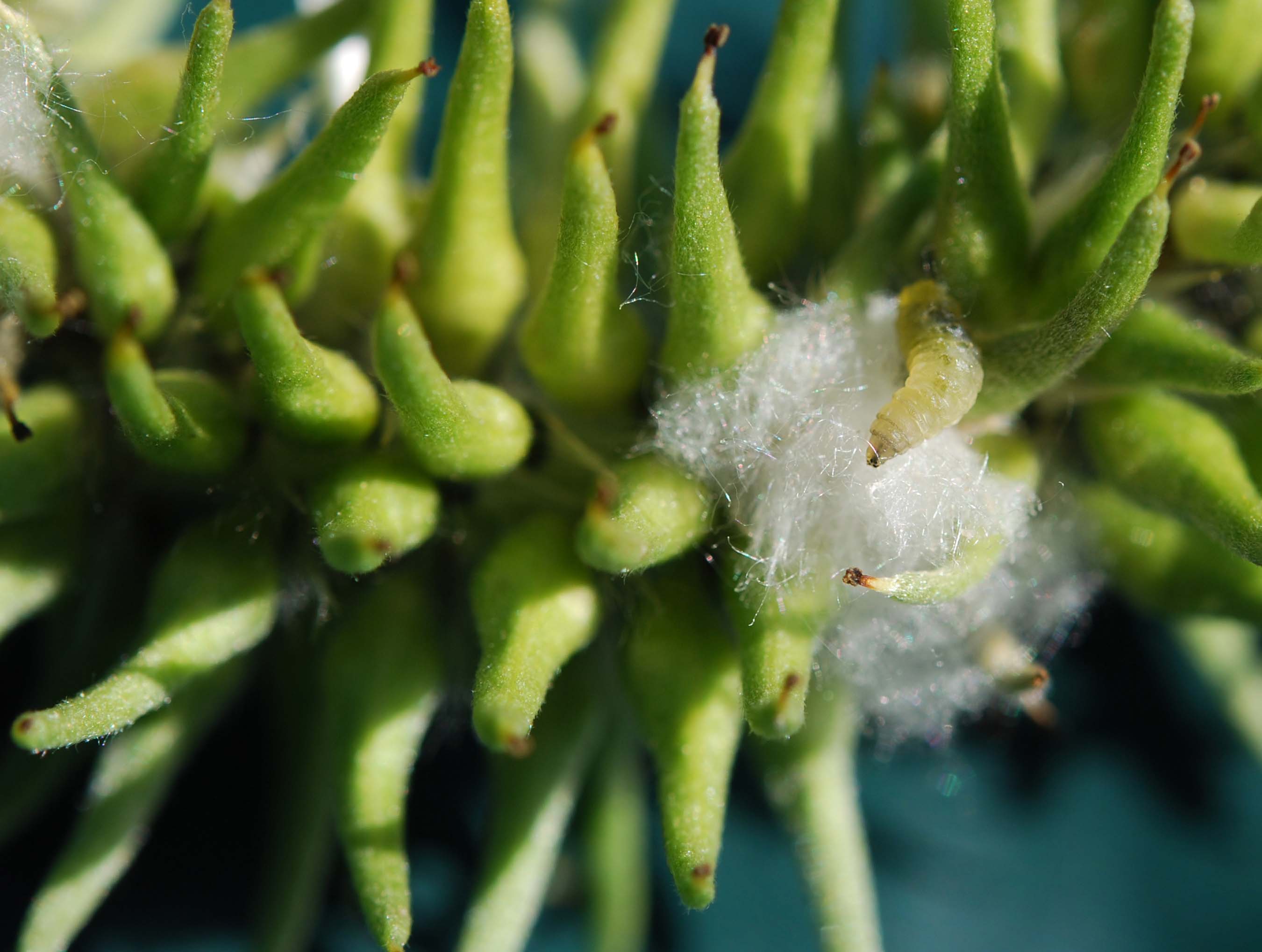 |
|
Egle sp. damage in catkin of Salix phylicifolia. |
Egle sp. larva dug out of the fluff in a Salix phylicifolia catkin. The minute mouthparts can be seen in the pointy front end. Total length of the larva ca. 7 mm. |
|
|
Pontopristia sp. (Hymenoptera: Tenthredinidae) Larvae of many species in the nematine sawfly genus Pontopristia feed on willow seeds and cause similar wadding as seen in the Egle-infested catkins above. However, the fluff contains frass, and the sawfly larvae are bigger and have a clear head and legs (left). |
 |
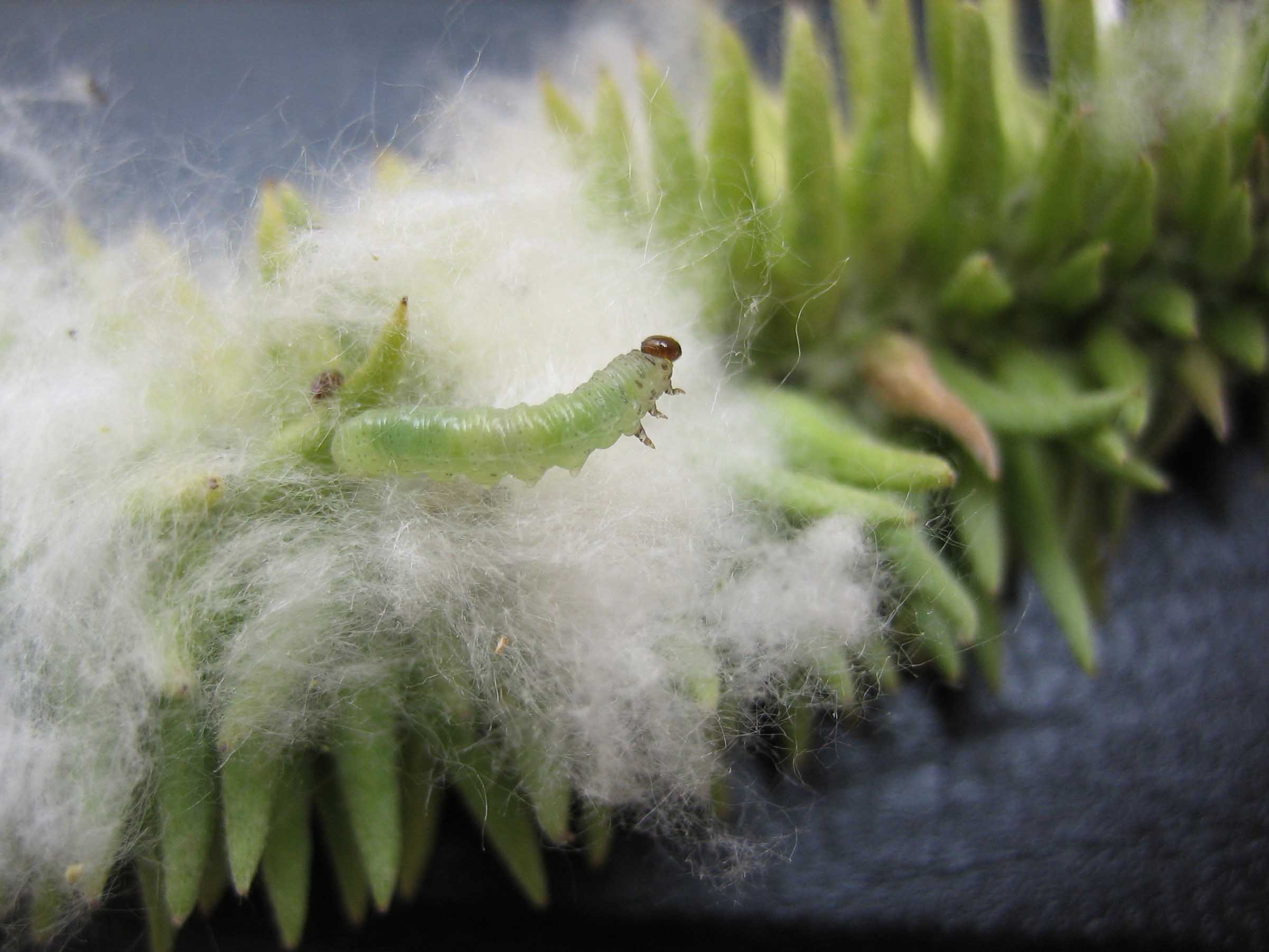 |
|
Wadding caused by Pontopristia sp. larvae feeding on seeds in a Salix phylicifolia catkin. |
Pontopristia sp. larva dug out of fluff on a Salix phylicifolia catkin. Pontopristia larvae are typically greenish, and they have a few black spots on the body behind the head. |
|
|
Pontopristia sp. (Hymenoptera: Tenthredinidae) The larvae of a few Pontopristia species mine inside the thick catkin stems of Salix lanata and Salix lapponum. Catkins of S. lapponum tend to become dry and wither above the mining site (left), and the greyish spotted larva can be found inside the catkin stem (right). |
|
|
|
Dried tip of a Salix lapponum catkin, indicating the presence of a catkin-mining Pontopristia larva inside the catkin stem. |
Larva of a catkin-mining Pontopristia species on Salix lapponum. |
|
|
Moth larvae (Lepidoptera: Tortricidae, Noctuidae, Gelechiidae, and Geometridae) Larvae of many moth species can also be found inside willow catkins. Moth larvae have fewer abdominal prolegs and flatter heads than the larvae of Pontopristia sawflies. The Salix lanata catkins on the left were mined by unknown moth larvae in the Botanical garden of the University of Oulu, although the willow species does not naturally occur this far south. |
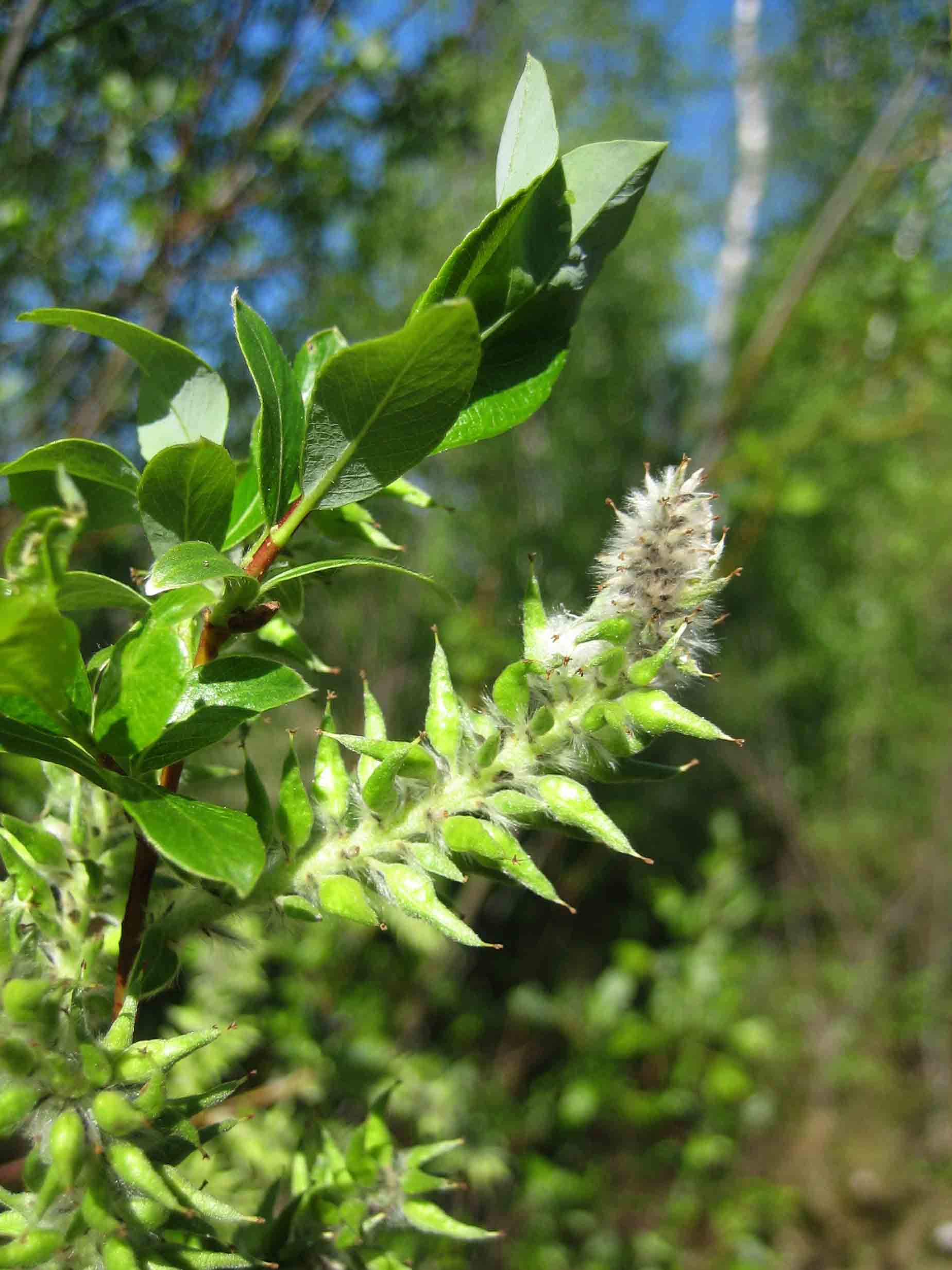 |
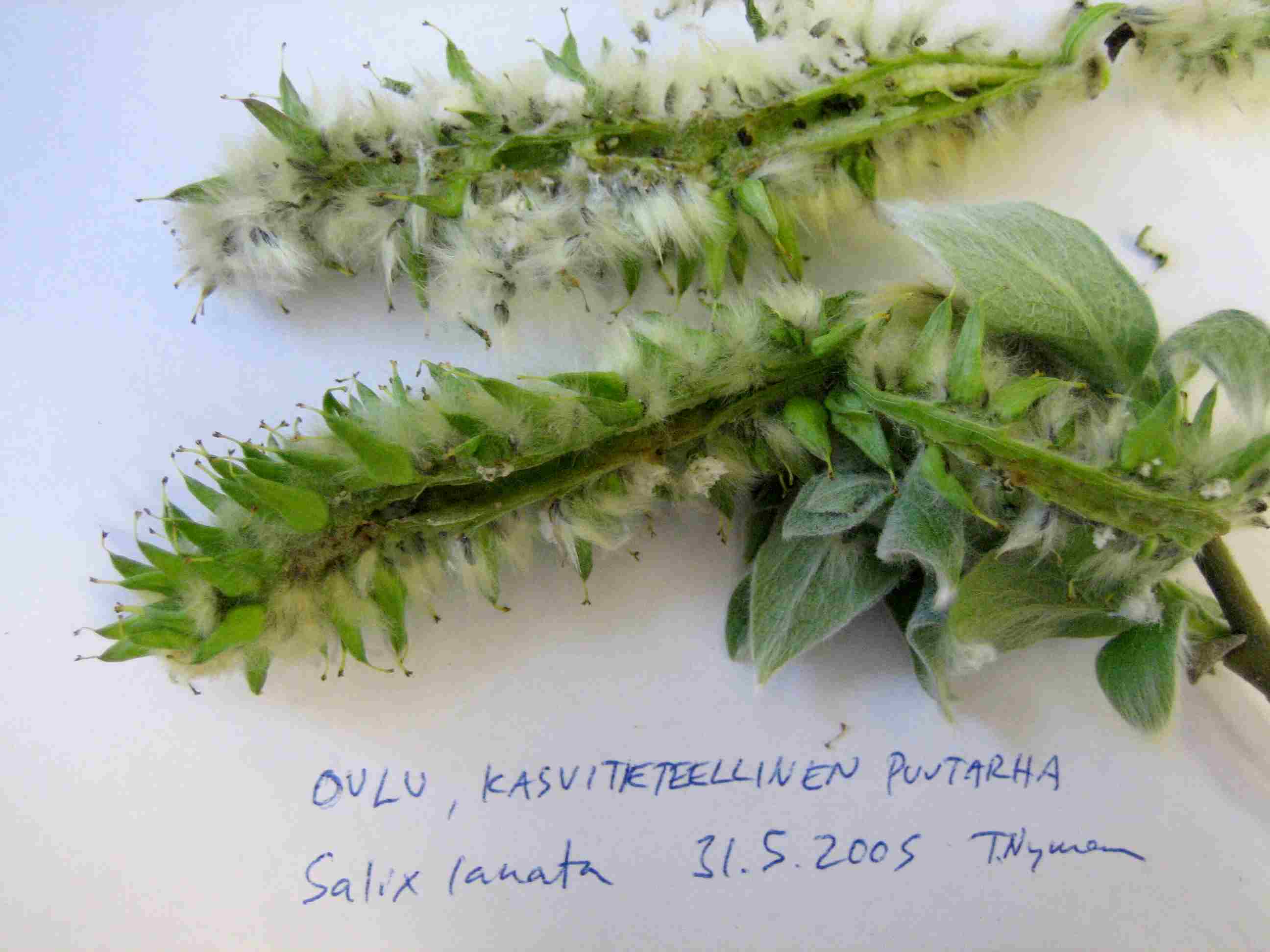 |
|
Salix phylicifolia catkin damaged by a moth larva mining inside the stem. Note the similarity to the Pontopristia sawfly damage above. |
Empty tunnels of lepidopteran catkin miners inside Salix lanata catkin stems. |
|
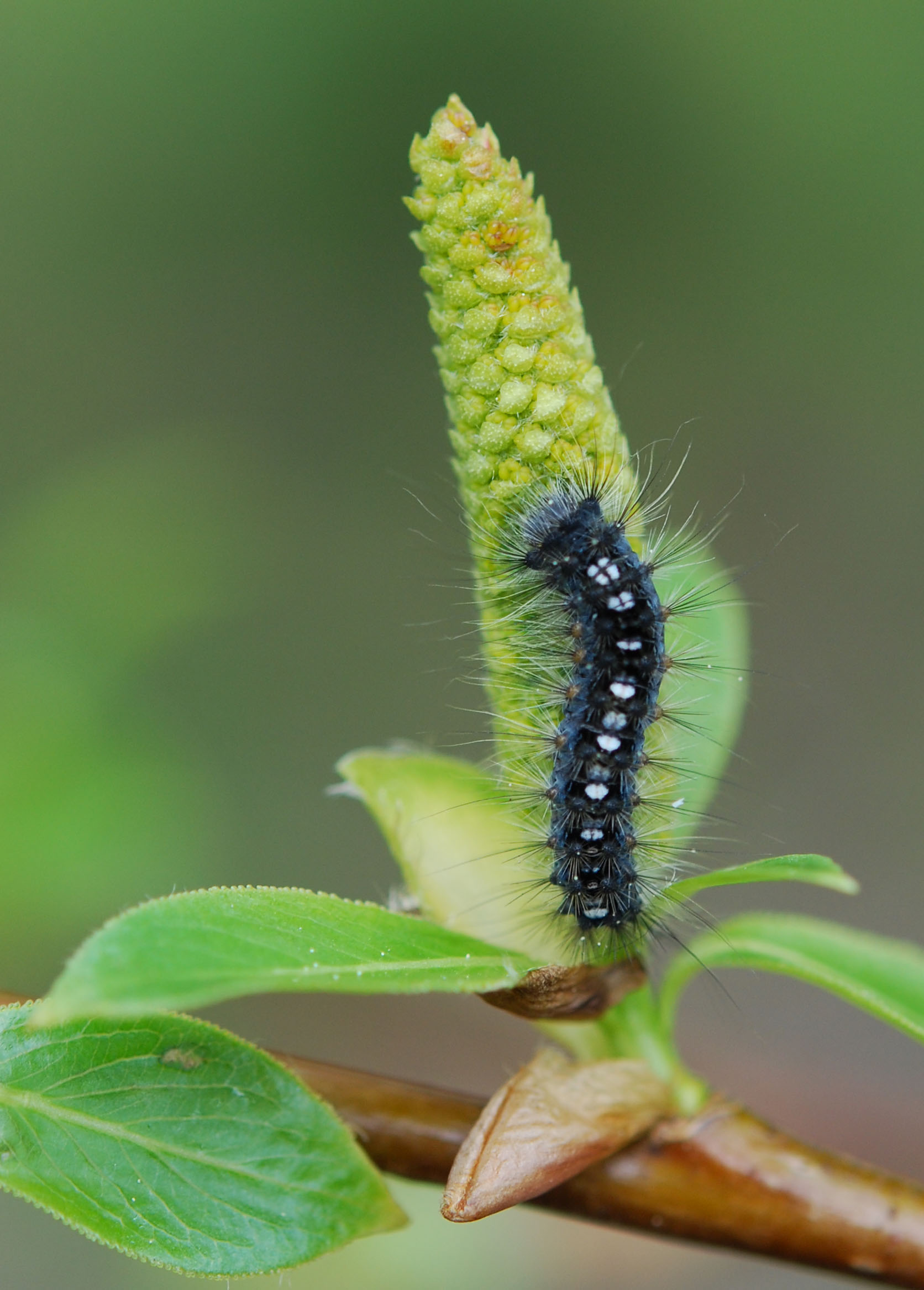 |
||
|
This is a bit of a borderline case: the lymantriid moth Leucoma salicis normally feeds on leaves, but this larva was chewing on a male catkin of Salix pentandra. |
||